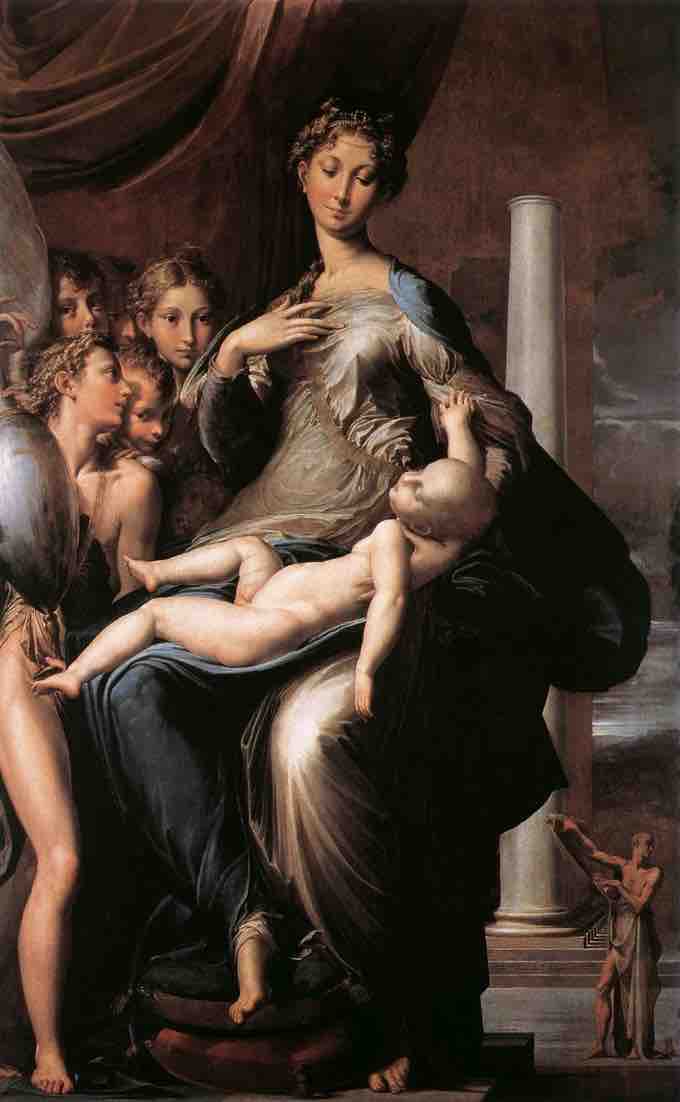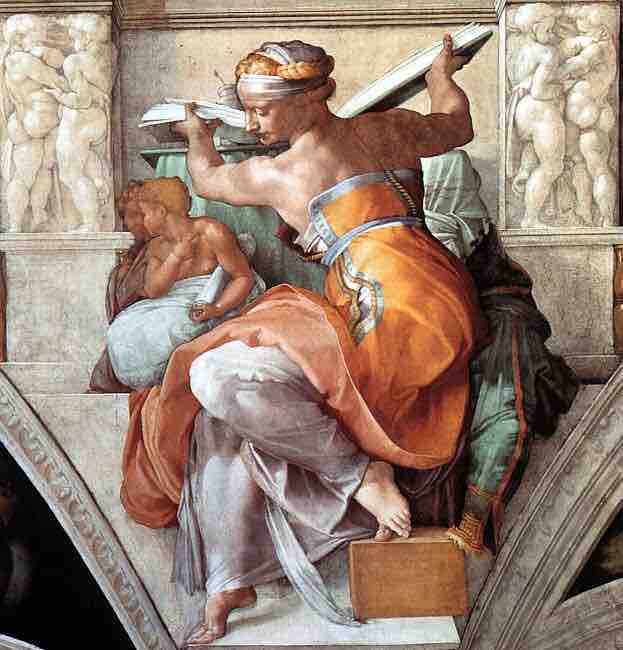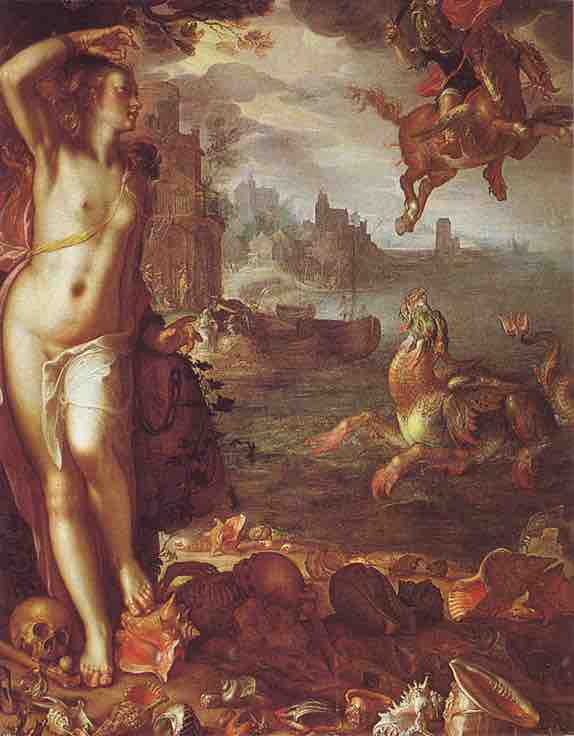Mannerism
Mannerism is a period of European art that emerged from the later years of the Italian High Renaissance. It began around 1520 and lasted until about 1580 in Italy, when a more Baroque style began to be favored. Stylistically, Mannerist painting encompasses a variety of approaches influenced by, and reacting to, the harmonious ideals and restrained naturalism associated with artists such as Leonardo da Vinci, Raphael, and early Michelangelo. Mannerism is notable for its intellectual sophistication as well as its artificial (as opposed to naturalistic) qualities. There is an existing debate between scholars as to whether Mannerism was its own, independent art movement, or if it should be considered as part of the High Renaissance.
Mannerist painting
Mannerism developed in both Florence and Rome. The early Mannerist painters in Florence—especially Jacopo da Pontormo and Rosso Fiorentino, both students of Andrea del Sarto—are notable for using elongated forms, precariously balanced poses, a collapsed perspective, irrational settings, and theatrical lighting. Parmigianino (a student of Correggio) and Giulio Romano (Raphael's head assistant) were moving in similarly stylized aesthetic directions in Rome. These artists had matured under the influence of the High Renaissance, and their style has been characterized as a reaction or exaggerated extension of it.

Madonna with the Long Neck
In Parmigianino's Madonna with the Long Neck (1534–40), Mannerism makes itself known by elongated proportions, highly stylized poses, and lack of clear perspective.
In other words, instead of studying nature directly, younger artists began studying Hellenistic sculptures and paintings of masters past. Therefore, this style is often identified as "anti-classical," yet at the time it was considered a natural progression from the High Renaissance. The earliest experimental phase of Mannerism, known for its "anti-classical" forms, lasted until about 1540 or 1550. This period has been described as both a natural extension of the art of Andrea del Sarto, Michelangelo, and Raphael, as well as a decline of those same artists' classicizing achievements.
In past analyses, it has been noted that Mannerism arose in the early 16th century alongside a number of other social, scientific, religious and political movements such as the Copernican model, the Sack of Rome, and the Protestant Reformation's increasing challenge to the power of the Catholic Church. Because of this, the style's elongated forms and distorted forms were once interpreted as a reaction to the idealized compositions prevalent in High Renaissance art.
Jacopo da Pontormo, Entombment, 1528, Santa Felicita, Florence
This work by Pontormo exemplifies early Mannerist paintings—the setting is irrational, the human forms are elongated and balanced in twisted poses, and the coloring of the work is artificial, as opposed to naturalistic.
This explanation for the radical stylistic shift in 1520 has fallen out of scholarly favor, though the early Mannerists are still set in stark contrast to High Renaissance conventions; the immediacy and balance achieved by Raphael's School of Athens no longer seemed interesting to young artists. Indeed, Michelangelo himself displayed tendencies towards Mannerism, notably in his vestibule to the Laurentian Library, in the figures on his Medici tombs, and above all the Sistine Chapel.

The Libyan Sibyl from Michelangelo's Sistine Chapel ceiling
Michelangelo himself displayed tendencies towards Mannerism, notably in the Sistine Chapel.
Maniera Greca
The second period of Mannerist painting, called "Maniera Greca," or High Mannerism, is commonly differentiated from the earlier, so-called "anti-classical" phase. Influenced by earlier Byzantine art, High Mannerists stressed intellectual conceits and artistic virtuosity, features that have led later critics to accuse them of working in an unnatural and affected "manner" (maniera). Maniera artists held their elder contemporary Michelangelo as their prime example; theirs was an art imitating art, rather than an art imitating nature. Maniera art combines exaggerated elegance with exquisite attention to surface and detail: porcelain-skinned figures recline in an even, tempered light, regarding the viewer with a cool glance, if at all. The Maniera subject rarely displays an excess of emotion, and for this reason is often interpreted as "cold" or "aloof. "
A number of the earliest Mannerist artists who had been working in Rome during the 1520s fled the city after the Sack of Rome in 1527. As they spread out across the continent in search of employment, their style was distributed throughout Italy and Europe. The result was the first international artistic style since the Gothic style (including French, English, and Dutch Mannerism styles). The style waned in Italy after 1580, as a new generation of artists, including the Carracci brothers, Caravaggio and Cigoli, reemphasized naturalism. Walter Friedlaender identified this period as "anti-mannerism," just as the early Mannerists were "anti-classical" in their reaction to the High Renaissance.

Joachim Wtewael's Perseus and Andromeda, 1616
An example of 17th century Dutch Mannerism.